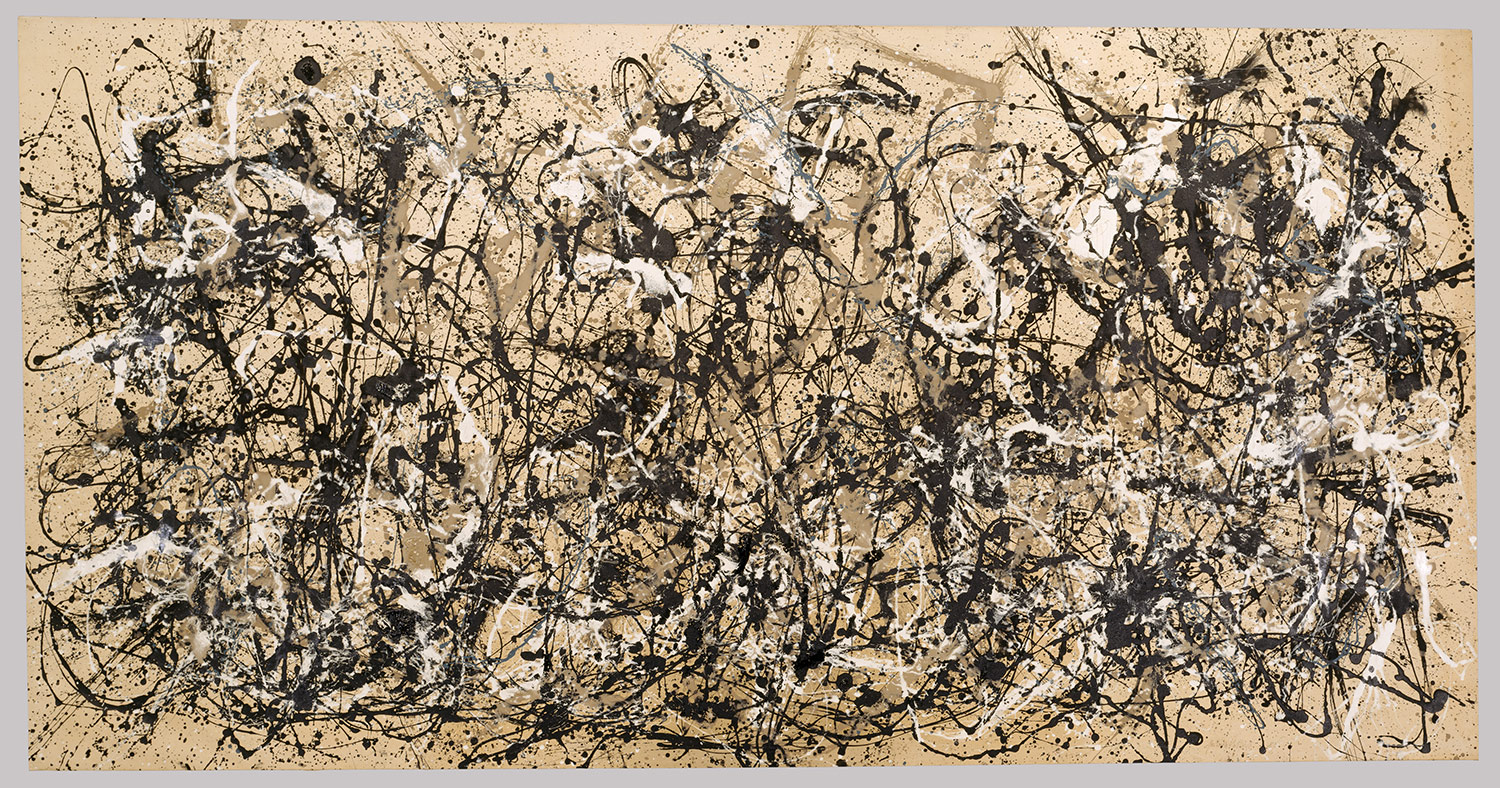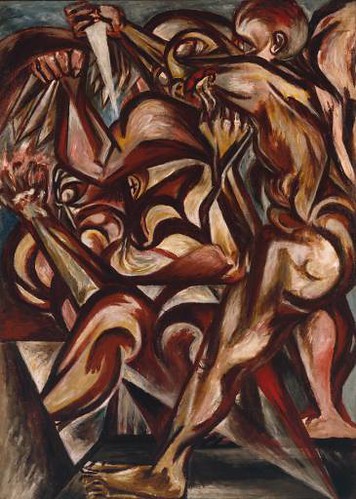(Pollock, 2011)

(Jackson Pollock, 2011)
At first glance Jackson Pollock’s Naked Man with Knife and Autumn Rhythm No. 30 do not appear to have many similarities at all. Overall the pieces are very different. In Naked Man with a Knife, His earlier work, he reveals the figure in more of a cubistic style, but non-the-less a figure is discernable as well as the knife. In Pollock’s later work, in this case Autumn Rhythm No. 30, there are no discernable figures in this piece.
Looking deeper into each of Pollock’s paintings the viewer begins to uncover subtle similarities. Each piece reveals great a sense of chaos, yet shows great balance and unity. Each piece also reveals an enormous feeling of energy and creates a unique affect to almost release internal aggression. One of the most obvious similarities between Pollock’s pieces is the circular swirling motion continually leading and guiding the viewer around each piece. Both pieces also appear to use a more limited color pallet. While Nakade Man with Knife introduces reds, blues and yellows, the overall tone is more muted creating a more monochromatic effect. Autumn Rhythm No. 30 uses black, white and a tan color which also creates a very muted earth tone.
Both pieces have a very full visual plane, but Naked Man with Knife, does lead the viewer to focus on the knife. I believe among the chaos created in the piece the knife is revealed to be the focal point. The many faces and exaggerated figure leads me to believe Pollock is shows a battle within in this piece. In Autumn Rhythm No. 30 Pollock may also reveal a battle within, but does not have the piece establish any form of visual hierarchy. “There's no central point of focus, no hierarchy of elements in this allover composition in which every bit of the surface is equally significant” (Jackson Pollock, 2011).
In my opinion his early work did defiantly influence his later style. The swirling and circular motion is very apparent in both. I think in the beginning Pollock revealed more of what was behind his paintings. As time progressed Pollock was able to use a more expressive abstract style, but hold his core meaning on a more private personal level. I think he also grew to move away from a focal point, wanting his work to be viewed as an entire expression instead of focusing on just one area of the piece. His early work was needed, and necessary for him to be able to evolved to his later works.
Works Cited:
Pollock, Jackson (1912-1956) - 1938-40 Naked Man with Knife (Tate Gallery, London) | Flickr - Photo Sharing!" Welcome to Flickr - Photo Sharing. Web. 03 May 2011.
"Jackson Pollock: Autumn Rhythm (Number 30) (57.92) | Heilbrunn Timeline of Art History | The Metropolitan Museum of Art." The Metropolitan Museum of Art, New York: Metmuseum.org. Web. 03 May 2011.
